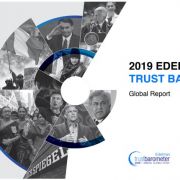How to manage difficult conversations with journalists
A guest post written by Jodie Brazier, Comms Consultant at Topline Comms
Promised you’d get something over to a journalist before their deadline but can’t? Need to ask a contact to pull an article about a client? Conversations like these are best avoided, but sometimes you don’t have a choice. Jodie Brazier from Topline Comms shares some tips to help prevent awkward moments before they happen, and how to approach these conversations when you can’t.
Conversations with journalists are a daily occurrence in my work at Topline Comms – I work on the STEM team and I’m lucky enough to deal with loads of amazing science and engineering journalists. One of my favourite parts of the job is sharing exciting new stories from clients with them, but not every conversation with a journalist is a smooth one.
Here are some tips on how to avoid difficult journalist conversations.
What to do if you can’t meet a journalist’s deadline:
To prevent this from happening:
- Always check with your client that they are happy to commit to a deadline before you confirm it with a journalist
- Be realistic. It’s much better to be upfront and say you won’t be able to meet the deadline and negotiate an extension than to commit to something which you know you’ll be unlikely to fulfil and leave the journalist hanging
What to do if it still happens:
- Let the journalist know as soon as possible. The sooner you tell them (especially if it’s for a print publication) the more time they have to find something to fill the vacant space
- Be honest and apologetic. Don’t try to make up an elaborate excuse; if the content is stuck in approvals, let them know that and make it clear that you know it’s an issue
- Have an idea of when it will be ready. It’s likely the first thing a journalist will want to know once you’ve told them it won’t be ready in time for their deadline
If you need to pull an article at the last minute:
To prevent this happening:
- Pulling content is a big no-no and a PR nightmare, so prevention is vital!
- Make sure that all content is signed off by your client (and by all the key client stakeholders that need to see it) before it goes to the journalist. Or, if it’s an interview, be very clear with your spokesperson that they shouldn’t say anything that they wouldn’t want to see published
What to do if it still happens:
- Unfortunately, sometimes there are circumstances that are beyond your control. It’s best to let the journalist know asap so they can arrange something to fill the space
- You could also offer the journalist another story they could use instead
- Be honest and tell them why the article is being withdrawn. Understanding the reasoning will make getting the bad news a bit more bearable
All in all, when it comes to breaking bad news to journalists, clear and frequent communication is key. Keep them informed of content status and if there are any issues, notify them as soon as possible. Think about if someone was to break this news to you, how best would you want to be told?
Build relationships with journalists in your sector – find them with the Vuelio Media Database and find out what they need with the Journalist Enquiry Service.



